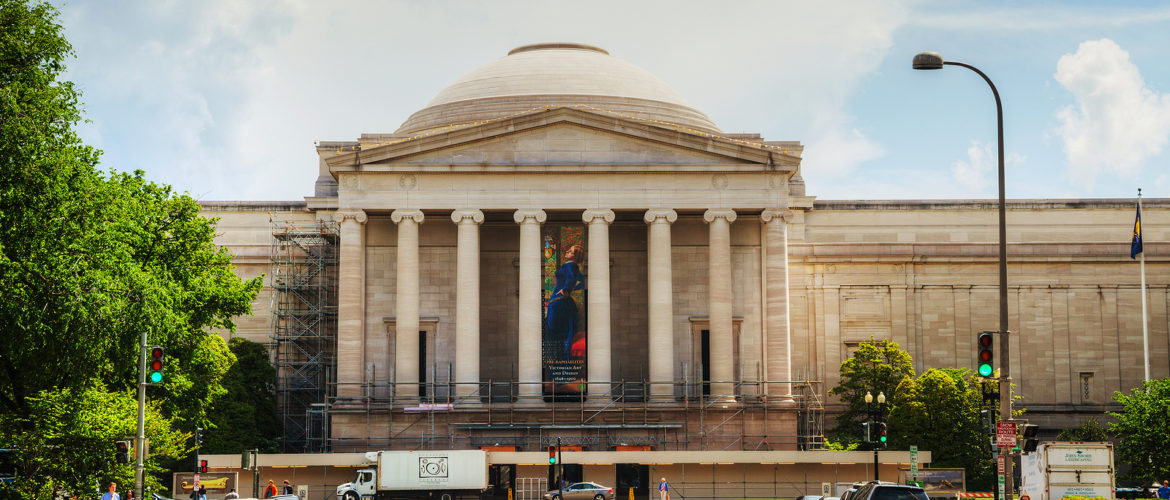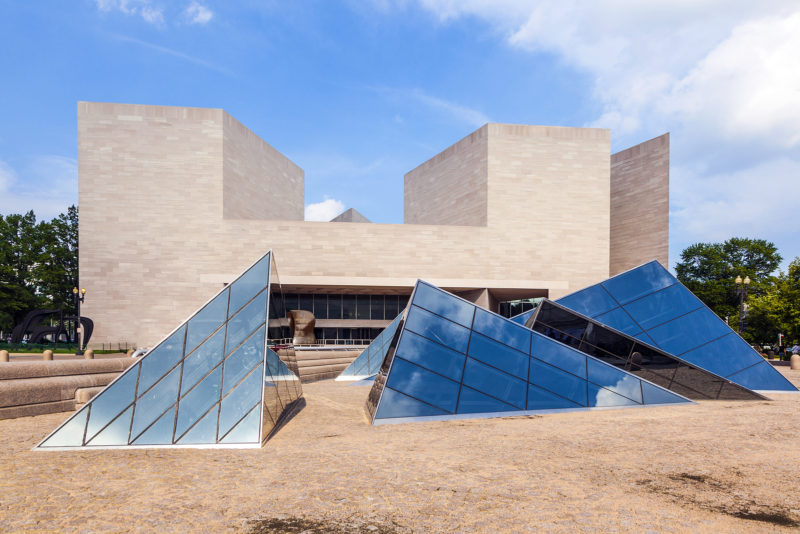The Architectural Poetry of the National Gallery of Art in Washington

The National Gallery of Art in Washington, DC, is widely known as an art entity with a huge collection of masterpieces. However, when visitors come to embrace the art legacy collected under its roof, they also come across the architectural dialogue that the entity embodies. The museum is made up of two separate buildings, each representing a distinct architectural style and offering a unique aesthetic experience. Let’s take a closer look at the National Gallery’s architectural uniqueness.
Neoclassical Serenity of the West Building
Many associate the West Building with a temple of neoclassical serenity, with its elements embodying balance and performance. The building was designed in 1941 under the creative guidance of John Russell Pope, embodying the values of classical humanism dominating the architectural practice of those times. Its domed rotunda was modeled after the Pantheon in Rome, with its Corinthian-style columns rising tall. The overall design is filled with symmetry, proportion, and mathematical harmony performed in the best tradition of the Renaissance, suiting the broader ideal of the eternal beauty of art. It’s not surprising that the West Building has become home to classical masterpieces by Leonardo da Vinci, Vermeer, and Raphael, among others.
Modern Geometry of the East Building
The East Building of the National Gallery of Art in Washington, DC, stands in stark contrast to the quiet elegance of its western counterpart. This part of the museum complex was designed and built upon the ideas of I.M. Pei, opening its doors in 1978. Here, the changing preferences and values take shape in the architectural form selection, symbolizing a transition from order to abstraction. The signature sharp angles and soaring atrium belong to Pei’s visual language, and the building’s composition in the form of two interlocking triangles serves as a visual metaphor for evolution and motion. While the West Building matches the masterpieces of Old Masters, this space naturally houses Abstract Expressionism, Cubism, and boundary-expanding contemporary installations. Here, viewers can explore works by Pollock, Rothko, and Calder, among many other groundbreaking artists of modernity.
The Architectural Poetry of the National Gallery of Art in Washington, DC
Those who visit the National Gallery of Art should definitely explore both buildings as two faces of an art space. The classicist restrained West Building embodies permanence and order, while the modern East Building embodies innovation and change. Despite such striking differences, both buildings supplement each other to deliver a well-rounded art consumption experience and explicate the versatility of art forms.

